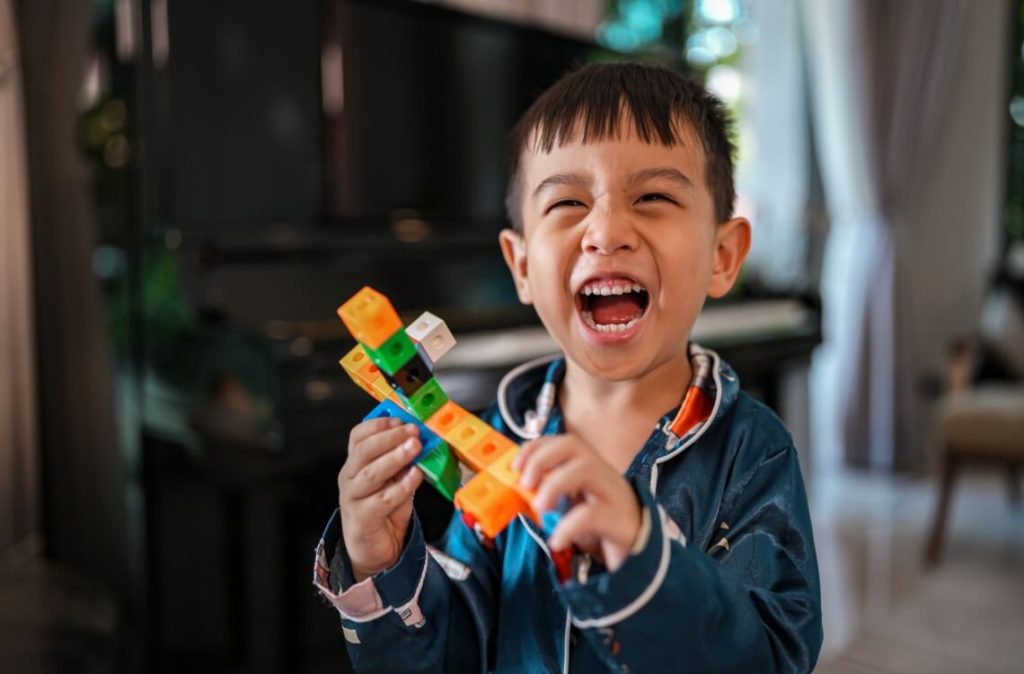I never imagined I’d be this indecisive.
Honestly, choosing a school for my 6-year-old has felt more complicated than planning a wedding.
In a year, my son will be leaving his beloved pure play learning kindergarten.
Now we’re weighing up Sekolah Kebangsaan, Chinese schools, private schools, international schools, homeschooling and a whole new concept (extremely foreign to us millennial parents) called self-directed learning.
To our surprise, self-directed learning really piqued our interest.
We want the best for our little one like every parent does.
So, we’re plunging into uncharted territory.
What Is Self-Directed Learning?
Self-directed learning isn’t just a fancy word.
Think of it as a guided but flexible approach where children set their own goals.
Instead of waiting for teachers to spoon-feed them, they get to explore subjects that spark their curiosity.
It’s a bit like giving them a box of crayons and saying, ‘Draw whatever you like’, but with teachers subtly pointing them towards a variety of crayons and showing them how colours blend.
Why This Matters to Me as a Parent
I’ve watched my son in his pure play environment.
He is happy, always excited for school and has endless of stories to share when he gets home.
So, the idea of a school where he can keep that spark alive is interesting.
This approach might encourage him to ask questions, think critically, and rummage through solutions on his own – a skill lacking in many younger graduates.
Balancing Arts and Sciences
Traditional schooling often splits lessons into neat boxes – for example: one period for art, another for science.
Self-directed learning knocks those walls down and can get uncomfortable for traditional parents.
It’s like telling your child they can paint their volcano project and simultaneously learn about lava chemistry.
If your child is anything like mine, they’ll be thrilled about getting messy!
Got a child who loves video games?
For some parents, this may spark worries about endless screen time and tech overload.
Yet, we must accept that today’s kids are immersed in technology, and swiping screens comes naturally to them.
In a self-directed learning programme, that tech-savviness – once a source of parental concern – can be channelled into something constructive.
Your child will learn to research, navigate new software, and use online tools while also developing independent thinking.
Now, isn’t that a win-win?
Problem Solving Edge
Self-directed learning encourages children to look at problems from different angles.
It’s a bit like a treasure hunt.
They follow clues and figure out answers. When they hit a dead end, they’re taught to re-examine their steps.
Instead of getting a big red ‘F’ on a test, they see it as a sign to tweak their approach and for certain children that might just be the key to reaching their full potential.
Will This Actually Help Them Get a Job One Day?
The future job market is anyone’s guess.
But one thing is certain: employers appreciate people who learn quickly and adapt.
Self-directed learners typically develop independence, resourcefulness, and resilience.
They’re used to finding answers for themselves because in a self-directed learning environment, children learn to set their own personal goals; whether academic or creative and develop strong organisational skills by juggling a variety of tasks, from coding and painting to constructing intricate Lego cities.
Most importantly, they discover that mistakes are not setbacks but valuable lessons, prompting them to rework their strategies and grow.
Potential Pitfalls of Self-Directed Learning
But like everything else, nothing is perfect, right?
Self-directed learning is a method that demands a high level of commitment.
Not every child thrives without structure.
Some kids might need a firm timetable and close supervision.
With so much freedom, there’s a chance your child will concentrate solely on areas they enjoy like dinosaurs and ignore maths.
Schools often have systems in place to track progress and provide support, but it’s good to ask about how they strike this balance.
Otherwise, you might wake up to discover your child can memorise T-Rex facts but can’t do simple math.
Is Self-Directed Learning for Everyone?
In the ever-expanding choice of education, self-directed learning is one of the newer ones.
It promises creativity, resilience, and a sense of ownership over learning.
But it’s not for everyone.
Some children need more structure. Some parents prefer a traditional setup.
As for me, I’m still weighing up what’s right for my little adventurer.
I love the idea of him becoming a confident, curious, and adaptable person.
But I also dread a scenario where he forgets to practise basic arithmetic because he’s too busy drawing dragons!
My plan? Ask loads of questions. Visit the school. Talk to other parents.
Maybe even chat with the kids themselves to gauge their interest.
At the end of the day, our goal is to raise happy, well-rounded human beings.
What about you, my fellow parents?
Would you explore self-directed learning for your children?
Disclaimer: The information provided in this article is for informational purposes only and should not be considered as medical advice from Motherhood. For any health-related concerns, it is advisable to consult with a qualified healthcare professional or medical practitioner.
For more insightful stories and fun recipes, stay tuned to Motherhood Story!
